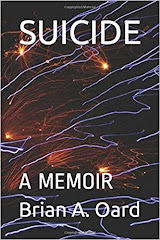There are a few scenes in King Lear that move me intensely: Lear on the heath, inquiring of the hovel offered as shelter from the storm, "Will it break my heart?"; the "foolish fond old man" speech; Edmund's "the wheel is come full circle. I am here"; and the final scene, which has an atmosphere and power that truly go too deep for tears, a grey melancholy gloom that pervades every line. This finale, perhaps more than any other scene in Shakespeare, is the writing of death. It is a great, shattering dramatization of the haunted, tragic, stricken quality of life lived in the full knowledge of death's presence, the consciousness of nothingness, the awareness of catharsis and afterlife and religious consolation as the nothings that are not there, and of death as the nothing that is.
The final scene is like the playing of one long, sustained chord in the bass. The chord has been there all along, sounding throughout the symphony, but now all the other instruments have fallen out and the dark tone alone remains, the smoky black-blood music, the "black milk of daybreak," the black flowers of death.
G. Wilson Knight famously called Hamlet the "ambassador of death," and he was almost right. The black-biled prince is our philosopher of death and life, the bottomlessly learned professor of our mortality. Hamlet is about death, but Lear is in death and of death. The unbearable gloom of that last act is in and of death to such an extent that we cannot move beyond it. It stands as a touchstone for that rare and sublime thing, the writing of death. And the act is for that reason difficult or even impossible to satisfactorily describe. One must read the play, enter its atmosphere, let it rip and tear and choke you until you feel drained and exhausted at the end. Then and only then will you have really read King Lear.
Saturday, March 28, 2009
Subscribe to:
Post Comments (Atom)










No comments:
Post a Comment